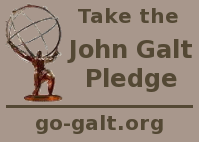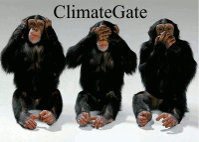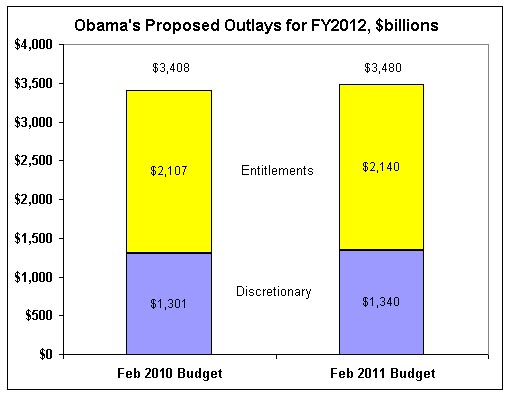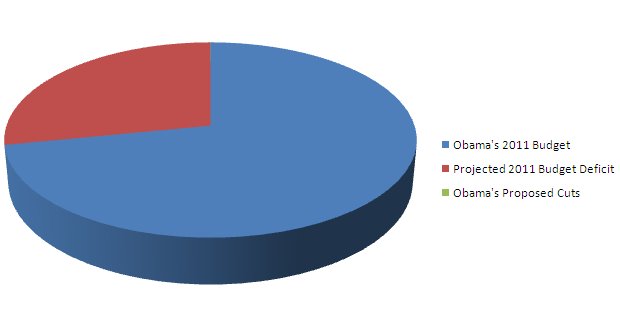12-22-2010

Permalink


Coming Home
To Roost
|
Subject: Money For Nothin' and Your Chicks For Free
"For many, immaturity is an ideal, not a defect."
— Mason Cooley

Since the founding of this country, each generation has faced its own
unique set of difficulties and struggles, whether those happened to
be droughts, floods, fires, tornados, earthquakes, hurricanes, wars,
abolition, suffrage, civil rights, economic depression, or any number
of other natural or man-made challenges. The economic, social and
environmental problems that confront us today have their own unique
character, but are actually no worse than many of those of the past.
However, there is a fundamental change that has occurred in
our society that does not bode well for our future. Where once the
majority of people understood that they must face their problems with
the will and strength of character to perform the work necessary to
overcome obstacles, this is no longer the case. Today, we now find
ourselves in a society where a sizable segment of the populace has
been trained to abdicate this responsibility and simply rely upon
government management and its financial assistance to mitigate any
hardships needing to be faces. Effectively, we now have a class of
perpetually dependent, aging adolescents who have never been required
to "grow up" and assume the mantle of responsible adulthood. How did
we arrive at this state?

The Erosion of the American Work Ethic:
America was colonized by people who understood the value of hard work
and perseverance. Traveling across the Atlantic with few possessions,
effectively cut off from European aid or assistance, the early
settlers knew that their survival depended upon their ability to
address whatever circumstances presented themselves. So important
were these characteristics, that they became codified as religious
virtues, handed down from generation to generation in what sociologist
Max Weber would later come to classify as the Protestant work
ethic. The great accomplishments and economic growth achieved
throughout the history of this country are the result of this spirit
of productiveness and personal drive exhibited by so many people in
pursuit of their dream of creating a better life for themselves.
Another principle shaping the founding character of this country was
the virtue of independence or self-reliance, best seen embodied in
the concept of individual rights as delineated in the Declaration of
Independence. The recognition that each person was master of their
own life, with the unfettered liberty to guide themselves in a manner
of their own choosing, implied an acceptance of the responsibility for
dealing with their personal survival and happiness. In this country,
the future was in one's own control, to be principally determined by
the consequences of one's actions.
From the 17th through the early 20th centuries, the causal relationship
between the application of effort, perseverance and self-reliance could
be clearly seen resulting in a steadily increasing prosperity, which
conveyed an extremely important lesson to each subsequent generation.
In general, the American culture was acknowledged as having an
optimistic view of the future with a "can-do" spirit, where,
with hard work, anything was possible. Opportunities were limitless,
while resignation and defeat were not treated as viable options.
Still, there were counter-forces at work destined to undermine this
positive American psyche.
Of course, there was the ever-present call for self-sacrifice which
has permeated every society on earth. The philosophy of altruism was
the antithesis to the value-based culture of the United States.
Whereas individualism preached productiveness and pride in one's
achievements, altruism demanded the relinquishing of all that was
valuable, and a sense of shame in one's abilities. While the goal
of individualism was personal happiness, the end result of altruism
was the embrace of pain and suffering as noble. In practice, Americans
rejected the worst aspects of altruism, but at the same time, lacking
a proper philosophical defense against its teachings, accepted the
psychological burden of guilt for having repeatedly failed to live up
(actually down) to its anti-life requirements.
However, the greater damage to American culture began in earnest with
the inception of the welfare system. The existential roots of welfare
in the United States extend back to 1642 with the creation of the
first compulsory public school in the Massachusetts Bay Colony. Here,
the acquisition of an education was declared to no longer be the
responsibility or each individual, but a "right". And at the
same time, it was also dictated that these individuals no longer
retained their free choice in deciding if, when, and by what means,
they would pursue that education. Instead, authorities would compel
them to attend school at the prescribed place and time, for the
mandated duration, studying predetermined subjects and material. In
addition, other working member of society would then be forced to bear
the cost for providing this newly created "right".
And so it began. Whenever a so called "positive right" to a
good or service is introduced, it carries with it two direct
consequences: the undermining of one or more inherent natural rights
(in this case, life and liberty), and the forced enslavement of those
who are required to provide the good or service to others.
Furthermore, the creation of two opposing groups — the
providers and the consumers — leads to indirect psychological
consequences: resentment on the part of providers, and a demanding
expectation on the part of the consumers for what they have been told
is their entitlement.
The imposition of the modern welfare state began in earnest with
Franklin Roosevelt during the Great Depression of the 1930s, was
dramatically expanded by Lyndon Johnson in the 1960s, and has been
continually growing ever since. And assistance is no longer limited
to individuals in need, but now encompass groups, businesses and
entire industries. We are all familiar with the ubiquitous Public
Education, Social Security, Medicare and Medicaid benefits, but that
only scratches the surface of the many assistance programs that our
legislators have created over time. A quick review of a few news
articles revealed the following currently active programs:
Industries
Agricultural Subsidies
Art Subsidies and Grants (NEA)
Biomass Subsidies
Education
Energy Subsidies
Export-Import Bank Loans
Fisheries Subsidies
Import/Export Controls
Manufacturing Extension Partnerships (MEP)
Mining Subsidies
News Subsidies (NPR, PBS, PRI, etc.)
Tariffs
Technology Subsidies

Ethnic, Religious and Trade Groups
Affirmative Action Programs
Faith-Based Services Funding
Minority Business Subsidies
Indian Casinos, Land, Resources, etc.
Special Privileges for Ethnic Groups
Religious Tax Exemptions
Union-Specific Legislation

Corporations and Businesses
Bailouts (TARP, etc.)
Government Contracts
Overseas Private Investment Corp. Loans
Publically Funded Infrastructure
Research Grants
Small Business Administration (SBA)
Tax Abatements and Deferrals
|
Families and Individuals
Aid to Families with Dependent Children (AFDC)
At-Risk Child Care
Automobile Tax Credits
Child Care and Development Fund
Child and Adult Care Food Program
Community Development Block Grants
Earned Income Tax Credit (EITC)
Education
Elderly Nutrition Program
Energy Investment Tax Credits
Food Stamps
Foster Care
General Assistance (General Relief)
General Assistance Medical Care (GAMC)
Head Start
Home Mortgage Financing
Housing Assistance for Low Income Households
Insurance Programs (FDIC, Medical, Catastrophe)
Interest Reduction Housing Payments
Job Corps
Library Subsidies
Low Income Home Energy Assistance
Low Rent Public Housing (HUD)
Maternal and Child Health
Medicaid
Medicare
Pell Grants
Pensions for Needy Veterans
Rural Housing Loans and Mortgages (USDA)
School Breakfast and Lunch
Social Security
Social Services (Title 20)
Stafford Loans
Summer Youth Employment
Supplemental Security Income
Training for Disadvantaged Youth and Adults
Transportation Subsidies
Women, Infants & Children Food Supplements
Workforce Investment Program (WIN)
|
That's sixty-six different programs or categories of aid currently
available from the federal government. Some of these you have
certainly heard of, while others may be unfamiliar. However, it
turns out that this list is incomplete and there are actually more
federal programs out there. How many would you guess?
Early in 2010, Chris Edwards reported the following interesting fact
on the CATO
Website:
|
"January 22, 2010 is a day that should live in infamy, at
least among believers in limited government. On that day,
the federal government added its 2,000th subsidy program
for individuals, businesses, or state and local governments."
|
2,000 Assistance Programs!
This I had to see for myself. So on December 3rd I went to the
website for the Catalog of Federal
Domestic Assistance and discovered that the CATO report was
incorrect. There were now actually 2,088 program! As I was
researching this article, I returned to this site every few days,
and upon each visit discovered additional aid programs had been
created in my absence. Just between December 3rd and the 20th,
six new programs were established. for a current total of 2,094.
This means that during 2010, Obama and the Congress were creating new
programs at a rate of two per week. And how many of
these did the administration inform us of in the name of its pledge
for openness and transparency?
The Department of Health and Human Services alone administers 410
different programs while the Department of Agriculture has 226. And
the Christopher Columbus Fellowship Foundation has not one, but four
separate programs available. Here is a breakdown of the different
categories of available aid:
Advisory Services and Counseling
Direct Loan
Direct Payments for a Specified Use
Direct Payments with Unrestricted Use
Dissemination of Technical Information
Federal Employment
Formula Grants
Guaranteed/Insured Loans
Guaranteed/Insured Loans
Insurance
Investigation of Complaints
Project Grants
Provision of Specialized Services
Sale, Exchange or Donation of Property or Goods
Training
Use of Property, Facilities or Equipment
Something free for everyone! Well, not everyone. Because, as
noted above, somebody has to actually pay for all this stuff.
Personal Welfare:
Where once people understood that it was their responsibility to work
to feed themselves, starting in 1933 the federal government stepped
in with the Civilian
Conservation Corps to create emergency make-work projects for the
unemployed. By 1935, at its peak, the CCC engaged roughly 506,000,
and after it's nine year run, a total of three million men had passed
through its ranks. Seventy-five years later, facing another economic
downturn, work is no longer actually required, as unemployment benefits
have been cemented into our culture, not as an emergency response which
you are expected to earn through hard labor, but as an entitlement to
be demanded by right. As of December 4th, the four-week rolling
average showed an active enrollment of 4,232,750 people, with Congress
and the Administration negotiating to extend these benefits, yet again,
to a total of 155 weeks, or three years, with no indication that there
is any fixed end in sight.
During the 1960s, with the intent of helping people living in poverty,
numerous state and federal entitlement (welfare) programs were
instituted in response to perceived needs. Yet, after decades of
tinkering with these policies,
study
after study
revealed that the long term impact on the recipients was an increase
in the creation of unlivable
slums, the further destruction of the two-parent family, elevated
teen and unwed pregnancies, a disincentive to seek out work, rising
school dropout rates, and a corresponding reduction in a child's IQ.
In addition, children of welfare recipients were shown to be much
more likely to be dependent upon these programs once becoming adults.
By 1995, the number of people on on the welfare rolls had risen to
a staggering fourteen million. And why not. After all, they're
entitled to these benefits aren't they? Today, due to
subsequent program reforms, that number on direct government
assistance now hovers around five million.
For many, an important aspect of the American Dream is the
acquisition of a house of one's own. For generations, the possibility
of home ownership has been a powerful motivator, causing individuals
and families to work hard and save diligently so that one day they
could realize their dream. The recognition that years of work and
savings were involved in order to make such a large purchase, clearly
conveyed the enormous value that a home represented. And everyone
understood this—until the federal government got involved.
In 1938, as part of the New Deal, the Federal National Mortgage
Association (Fannie Mae) was established to broaden the
secondary home mortgage market by funneling federal funds into banks,
to be converted into affordable housing loans. In 1970, a
second Federal Home Loan Mortgage Corporation (Freddie Mac)
was established by Congress for essentially the same purpose.
With the belief that everyone was entitled to the American
Dream, politicians, throughout the 70s, 80s and 90s, put more and
more pressure of these two institutions, demanding that they
significantly expand the number of families able to purchase their
own homes. The result was a significant lowering in the standards
required to qualify for a mortgage, with millions of families taking
on a debt liability which they could not afford to repay, and
acquiring property, the value of which was not properly appreciated.
When the inevitable foreclosures came, these same people were
indignant at having been "cheated" out of their homes, which they
had been repeatedly told were theirs by "right".
The message is clear: Your future is insured. Should you struggle
and fail—or simply not struggle at all—the government
will step in and manage your life, providing for you not simply the
basic necessities, but the luxuries as well. Personal responsibility
and self-reliance are no longer the coin of the realm. It is your
need that matter, and we are here to take care of you, because
that is your birthright as an American. Sit back and take it easy.
You're entitled!
Corporate Welfare:
The 20th century was the heyday of private corporate research, with
businesses reinvesting a sizable percentage of their profits back into
R&D intended to yield future business innovations. These companies
often employed scientists in a variety of field, allowing them the
freedom to explore areas of pure research which often resulted in
startling discoveries leading to a large number of Nobel Prizes.
Some of the more notable corporate research facilities included:
- AT&T's Bell Labs,
which was responsible for inventing radio astronomy, the
transistor, the laser, the UNIX operating system, the C and
C++ programming languages, information theory, large-scale
integrated circuits, CCD sensors, and the discovery of the
cosmic microwave background radiation.
- Xerox's
Palo Alto Research Center (PARC), the birthing place of
the modern personal computer, including invention of the
bitmapped display, the graphical user interface (GUI), mouse,
laser printing, ethernet, what-you-see-is-what-you-get
(WYSIWYG) text editing, object-oriented programming, along
with the liquid crystal display (LCD), the optical disc,
IPv6 protocol and the Smalltalk programming language.
- IBM's
Thomas J. Watson Research Center, in conjunction with
numerous other worldwide research facilities, created magnetic
storage systems, the FORTRAN programming language, invented
the relational database, speech recognition, the token-ring
network, the Blue Gene super-computer, the scanning
tunneling microscope, wrote the SABRE commercial airline
scheduling system, and discovered high-temperature
superconductivity and fractal geometry.
- GE's Global
Research Centers which were responsible for the vacuum
tube as well as the fluorescent and halogen lamps, the first
television broadcast, the jet engine, non-reflecting glass,
silicone chemistry, the seeding or clouds, the auto-pilot,
Lexan polycarbonate resin, artificial diamond production,
solid-state lasers, and magnetic resonance imaging (MRI).
Of course this merely scratches the surface in the history of the
innovations created through efforts of private enterprise. Yet,
despite this stellar historical track record of rapid advancement,
government has found a need to intervene, undermining the foundation
of private research through the public funding of agricultural,
scientific, technology and industrial research, either through
public universities, or by grants and other subsidies given directly
to businesses. According to a CATO
report, the direct and indirect subsidy to private businesses in
2006 was $92 billion. Today, with the TARP bailouts, stimulus bills,
pork buried in trillion dollar budgets, and the FED's inability to
keep track of $9
trillion(!), the size of the corporate welfare system is difficult
to estimate accurately. However, a few things are clear:
- First, as CATO puts it, this public-private partnership clearly
breeds an "incestuous relationship" where businesses
lobby government for special favors, and government officials
extract kickbacks (also known as "campaign contributions") in
exchange for back-room promises to wield influence on behalf
of the paying business.
- Secondly, government influence ultimately ends up directing
research away from promising avenues of investigation as
identified by smart, creative individuals, and towards areas
which supports a predetermined political agenda —
perverting the scientific method in the process. There are
numerous examples of this, but none so clear as the abomination
concerning the public funding of
climate science
research, turning it into the corrupt handmaiden of
political interests.
- And third, when one business can fund its research and
development programs at the taxpayer's expense, this frees
up those previously allocated funds to be directed towards
other areas, including supporting the businesses bottom line.
Competitors, still responsible for their own development costs,
are now placed at a significant disadvantage and either learn
to also feed at the public trough, or eventually close their
doors.
Public funding of research, as well as all other forms of business
subsidies, are like a cancer. Once introduced into the free-enterprise
system they slowly advance, killing the thriving private organisms,
and leaving a malignant form of corrupt Fascism in their place.
Learned Helplessness:
From Wikipedia:
|
"Learned helplessness, as a technical term in ...
human psychology, means a condition of a human being ... in
which it has learned to behave helplessly, even when the
opportunity is restored for it to help itself by avoiding an
unpleasant or harmful circumstance to which it has been
subjected. Learned helplessness theory is the view that
clinical depression and related mental illnesses result from
a perceived absence of control over the outcome of a
situation."
"One of the most intriguing aspects is "vicarious learning
(or modelling [sic])": that people can learn to be
helpless through observing another person encountering
uncontrollable events."
|
This description of learned helplessness gets to the essence
of what is most damaging in all government programs of
assistance and regulation. Each time the government acts to
intervene, it sends a clear and powerful two-pronged message:
- You are not responsible
- You are not in control
Accepting responsibility is the essence of adulthood. Approaching our
life rationally, we gather experience and knowledge in order to prepare
ourselves for the challenges that the we may encounter. As we acquire
more skills and understanding, we gain confidence in our abilities and
take pride in our willingness to face the future, whatever it may hold.
And because of this, our life becomes an exciting adventure to be
embraced, rather than an exercise in fearful caution. But all of this
may be undermined if one believes that they have no control over their
destiny and no responsibility to choose and guide their future course.
Yet this is exactly what the government does to so many.
While professing to help people in need, every government action does
more harm than good, by stripping the recipient of the dignity of
their adulthood and forcing them to accept the role of helpless child.
When this is repeated over and over, the message is reinforced and
the "helplessness" simply becomes the norm. Seen in this light, it
is no wonder that so many on welfare rarely demonstrate the initiative
to pull themselves out of their impoverished conditions, when every
incentive to do so has been destroyed by the government's oh so
unhelpful hand.
Fortunately, the culture of entrepreneurship still thrives in this
country, providing an outlet for those motivated by the thrill of
a challenge and the opportunity to test one's abilities to the
fullest. Start-ups and small businesses have generally flown under
the government's radar and been relatively free of its strong-arm
regulatory controls. But as a business becomes more and more
successful, it draws the government's attention and the game changes.
Where once a business leader's judgment was his or her ultimate guide,
and the responsibility for success or failure rested squarely upon
their shoulders, the encroachment of rules and regulations imposed
from the outside destroys that simple calculation. When it begins
to be more important to address the requirement of the bureaucrats
than those of the market; when pleasing some politician rather than
the customer becomes the standard of business success; when the
majority of your profits flow in from Washington D.C. with strings
attached; then you are playing a child's game of appeasement, and
no self-respecting adult would agree to submit to those terms. So
the adults are systematically driven from the ranks of big business,
leaving their operations to those of undeveloped character, lacking
independence, integrity and pride.
In this country, there have now been four generations raised under
the ever increasing presumption that the government is Big Daddy,
here to protect his children from the consequences of a complex,
unpredictable and painful world. Not everyone has succumbed to the
message, but enough have that it brings into question whether there
remains a sufficient number of people still possessing the
character required to address the difficult choices we now face. Will
this country react like the petulant children we see demonstrating
and rioting in Greece, France and Britain when faced with reality, or
will it stand tall, as a proud adult, and act to preserve its
future? We shall soon see.
External links to reprints of this article:
|








